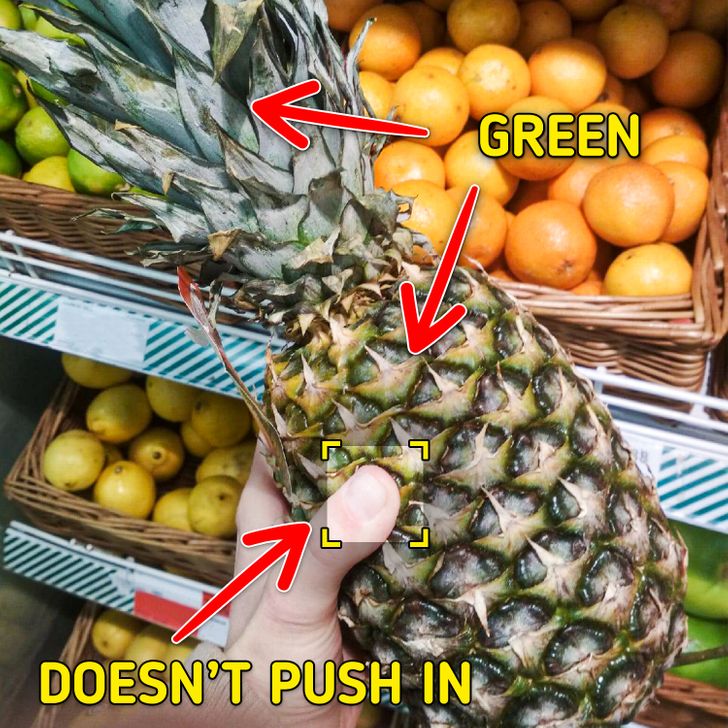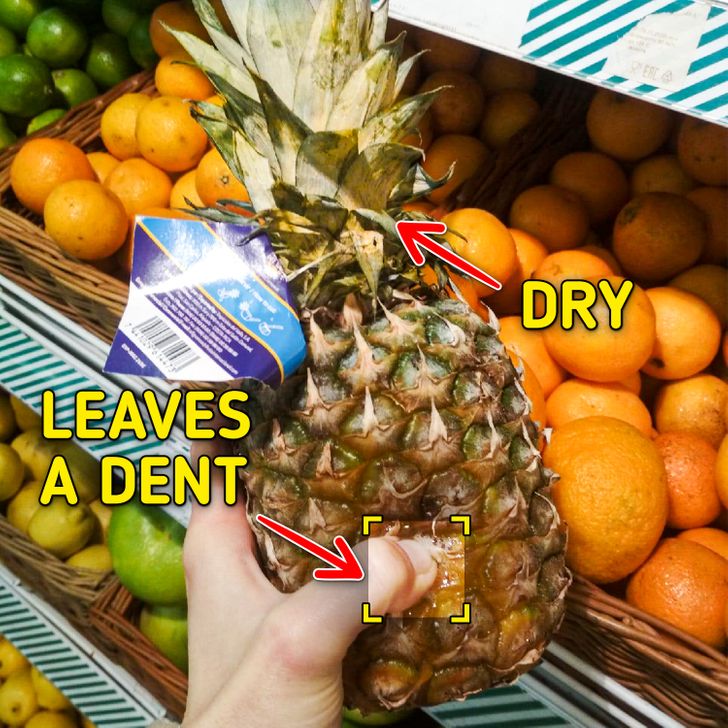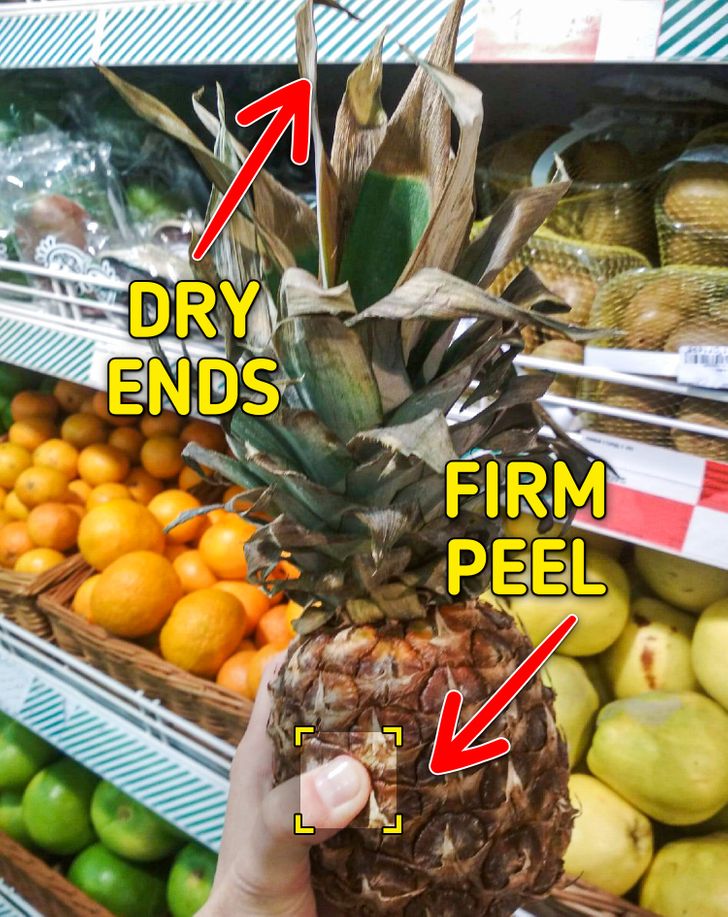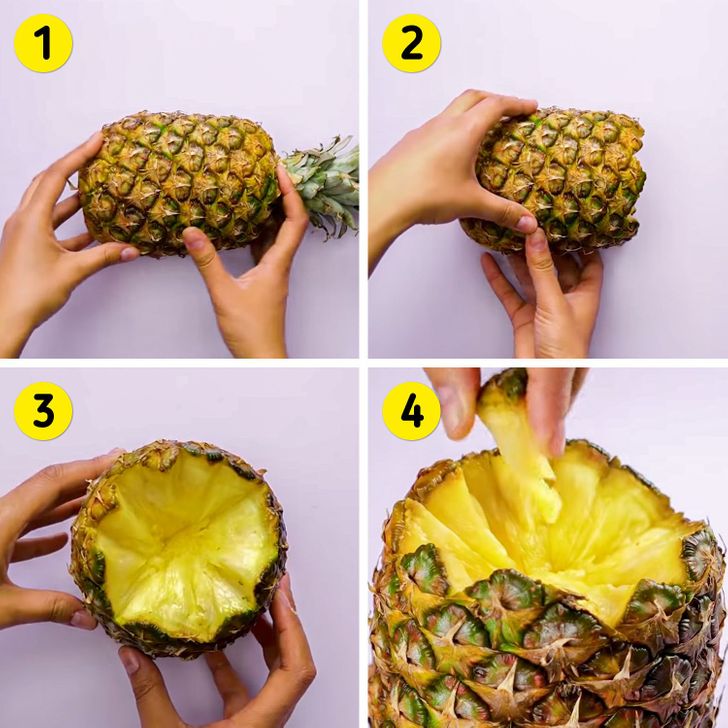How to Choose a Good Pineapple
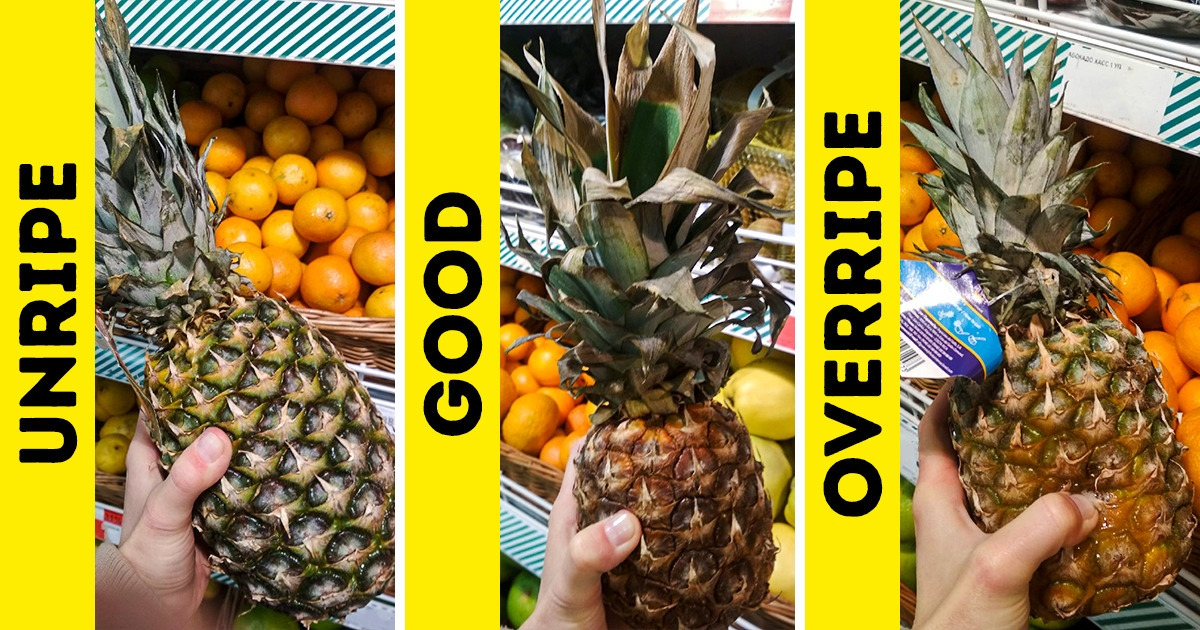
When it comes to exotic fruit, the pineapple is a favorite among both kids and adults. But how can one avoid making a mistake and buy good fruit at the store?
5-Minute Crafts is going to tell you how to choose a ripe and sweet pineapple.
Unripe pineapple: signs
- The peels of unripe pineapples are very hard to the touch. Press on it — if it doesn’t spring back or push in, it means that you’re holding an unripe fruit in your hands.
- The color of the peel is green.
- Bring the fruit to your nose and smell it. If you can’t sense anything, it means the pineapple is unripe.
- The top of such fruit is green without dried ends on the leaves. Try to rotate the top a bit — this is impossible to do with unripe pineapples, especially if it doesn’t move from side to side.
Keep in mind that an unripe pineapple can’t ripen. You can make it a bit softer but the fruit will stay sour without any aroma. Pineapple picks up sugar from the stalks and will no longer be sweet if cut off prematurely. It is not recommended to eat unripe pineapples because they irritate the mucous membrane of the stomach and mouth due to their high acidity and can cause a laxative effect and vomiting.
Spoiled pineapple: signs
- The peel of a pineapple, if it has started to spoil, will be soft. Press it with your finger — if the fruit is spoiled, then a dent will appear or a liquid will flow from the inside.
- The peel of a spoiled pineapple can have white and brown spots.
- Smell the pineapple: if you sense a sharp smell, it means the fruit is overripe and the rotting process has already started inside.
- A yellowish, greyish-brown, or dry top is a sign that the pineapple has started to spoil.
- Knock on the fruit. If you can hear that there is an emptiness inside or that the sound is tinkling, it means the pineapple is overripe or has already spoiled.
A rotten pineapple should not be eaten as it can cause food poisoning, even if you cut away the rotten areas.
Good pineapple: signs
- The peel of a ripe pineapple should be firm. Press it — if there’s a dent left under your finger that restores quickly, it means you’re holding a ripe fruit.
- Pay attention to the color of the pineapple’s peel. It should be brownish-yellowish.
- Smell the fruit — a ripe pineapple should give off a subtle, pleasant smell.
- The top of such fruit is green with dry ends on the leaves. Try to slightly rotate the top — it should move from side to side if the fruit is ripe.
- Knock on the pineapple — a ripe fruit should make a “thud” sound.
How to cut a pineapple correctly
Steps 1 and 2: Take a pineapple and remove its top by moving the knife over the top of its shells.
Steps 3 and 4: One after another, take out each segment and put them on a plate. Your pineapple is ready to eat!
